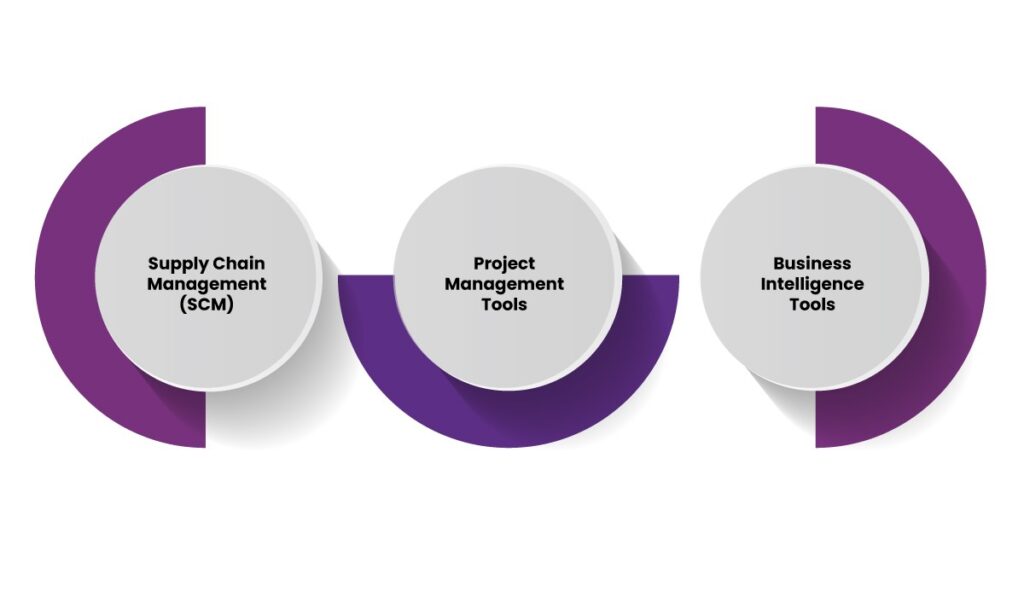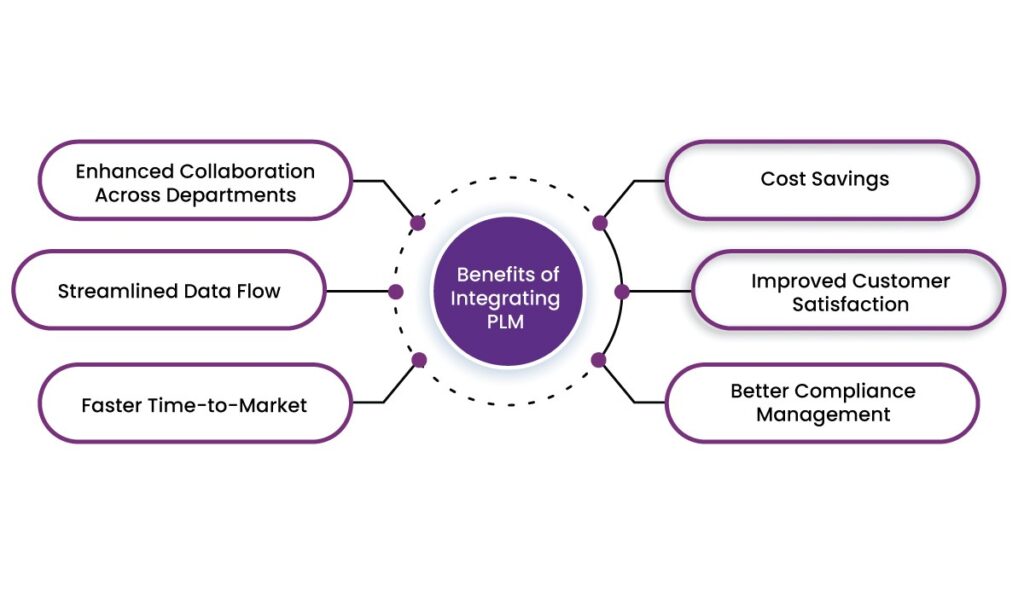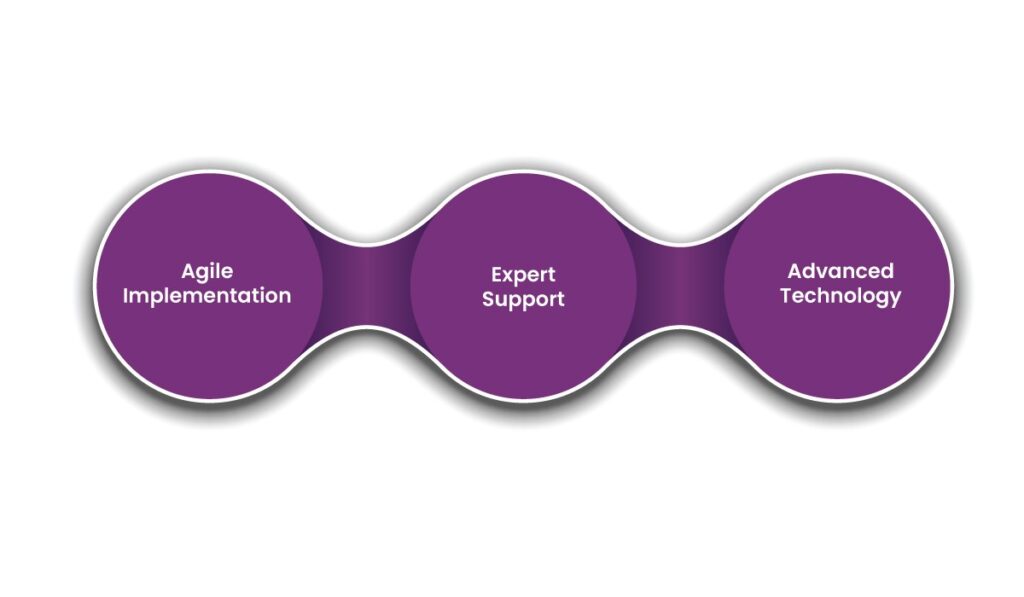Imagine a design team finalizing the perfect product concept, only to realize that the manufacturing team has outdated specifications. Or think about a customer service team struggling to provide accurate answers because they don’t have access to the latest product updates. These disconnects can cost businesses time, money, and trust.
That’s where Product Lifecycle Management (PLM) comes into play. By integrating PLM with systems like ERP and CRM, businesses can eliminate silos and create a connected environment where information flows freely across teams. PLM isn’t just about managing a product’s lifecycle anymore—it’s about building a bridge between departments like design, production, and customer service to work more efficiently.
In this blog, we’ll take a closer look at how PLM integrates with ERP, CRM, and other business systems, the benefits it brings, and why more companies are choosing to embrace this approach.
Table of Contents
How PLM Integrates with ERP, CRM, and Other Business Systems
Product Lifecycle Management (PLM) is a structured approach to managing a product from its initial concept through design, manufacturing, and eventual disposal. It helps teams work collaboratively by acting as a centralized platform for all product-related information. With the help of product lifecycle management software, businesses can streamline communication and maintain consistent updates across all stages of the product lifecycle.
The Integration of PLM and ERP
Enterprise Resource Planning (ERP) systems manage core business operations like procurement, supply chain, and finance, while Product Lifecycle Management (PLM) focuses on the design and development of products. Integrating these two systems bridges the gap between product design and operational execution, creating a seamless flow of information across the organization.
This integration works by synchronizing key data such as design specifications, bills of materials (BOM), and change management processes. Modern APIs and middleware platforms enable automated data exchange, ensuring that both systems are updated in real-time. Effective collaboration between IT and functional teams is critical for mapping and synchronizing data accurately.
For example, PLM supplies ERP with crucial design details, including the BOM, for manufacturing planning and execution. In return, ERP provides PLM with essential operational data like production schedules, costs, and inventory levels. This two-way communication ensures product decisions are informed by real-time operational insights, reducing delays, improving efficiency, and aligning product design with business objectives.
By integrating PLM and ERP, businesses can achieve greater collaboration and efficiency across departments, leading to more streamlined operations and faster time-to-market.
The Integration of PLM and CRM
Customer Relationship Management (CRM) systems are essential for managing customer interactions, sales, and support, while Product Lifecycle Management (PLM) focuses on the design and development of products. Integrating these systems creates a vital connection between customer-facing teams and product design, ensuring better alignment between customer needs and product features.
This integration allows sales teams to access accurate and up-to-date product details, specifications, and availability directly from the PLM system. With this information, customer communication becomes more precise, enhancing trust and satisfaction. At the same time, CRM systems provide valuable customer feedback that can flow into the PLM system, enabling design teams to refine products based on real-world insights.
Achieving this integration involves connecting customer data, product specifications, and feedback channels through modern connectors or integration platforms. To maximize the benefits, sales and design teams must be trained to interpret and utilize the shared data effectively, fostering collaboration across departments.
For instance, feedback gathered through CRM about a product’s usability or features can guide the PLM team in making improvements. Similarly, support teams equipped with accurate product data can resolve customer issues more efficiently, leading to higher satisfaction rates.
By linking PLM and CRM, businesses can create a seamless flow of information, improve collaboration, and deliver products that better meet customer expectations.
The Integration of PLM with Other Business Systems
Beyond ERP and CRM, product lifecycle management software can integrate with several other business systems to enhance collaboration and decision-making across various departments:
- Supply Chain Management (SCM): PLM integration with SCM ensures that materials and components align with the product’s design specifications, reducing errors and delays. This involves sharing supplier data, part numbers, and specifications between PLM and SCM tools. Automation tools like EDI (Electronic Data Interchange) or APIs can facilitate real-time updates.
- Project Management Tools: Integration with project management software helps track design and development timelines, ensuring tasks are completed on schedule. Synchronize milestones and deliverables from PLM with project management platforms to track progress and resource allocation.
- Business Intelligence Tools: By connecting with analytics platforms, PLM provides actionable insights, enabling better decisions based on product performance and operational data. For integration, use reporting tools to link product data from PLM with BI dashboards, offering comprehensive views of product performance.

What are the Benefits of Integrating PLM with ERP, CRM, and Other Business Systems?
Integrating PLM with ERP, CRM, and other business systems brings significant advantages to organizations. It enhances collaboration, improves decision-making, and aligns different functions within a business to work toward shared goals. With the capabilities of modern product lifecycle management software and the right integration strategies, businesses can create a more connected and efficient operational environment, resulting in better products and stronger customer relationships.
Enhanced Collaboration Across Departments
When PLM integrates with ERP and CRM, it breaks down silos between teams. For example, design teams working in PLM can share data with procurement teams in ERP to source materials more effectively. This shared access improves communication and reduces errors, helping teams work better together and leading to faster project completion with fewer mistakes.
Streamlined Data Flow
Disconnected systems often result in duplicate work or outdated information. With product lifecycle management software acting as a central hub, data flows consistently across all systems, providing a single source of truth. This accurate and consistent data improves product quality and keeps customers satisfied.
Faster Time-to-Market
Integrating PLM with ERP allows manufacturing schedules to align directly with design updates. Similarly, CRM integration helps incorporate customer feedback into designs quickly. These connections shorten the development cycle, enabling products to reach the market faster and giving businesses a competitive edge.
Cost Savings
Integration reduces manual data entry and redundancy. For instance, PLM-ERP integration helps identify cost-effective manufacturing options early in the design process, saving resources. This leads to lower operational costs and increased profitability.
Improved Customer Satisfaction
With PLM-CRM integration, support teams can access real-time product details, enabling them to address customer issues more effectively. This creates a better customer experience, leading to loyal customers who trust and value your brand.
Better Compliance Management
Integrated systems help businesses stay compliant with regulations. For example, updates in product lifecycle management software automatically reflect in ERP, ensuring production aligns with regulatory standards. This helps businesses avoid costly fines and product recalls.
By integrating PLM with ERP, CRM, and other business systems, businesses can improve efficiency, reduce costs, and enhance customer satisfaction while maintaining compliance across the product lifecycle.

How Helixbeat Simplifies PLM Integration
At Helixbeat, we focus on making Product Lifecycle Management (PLM) integration with ERP, CRM, and other systems as smooth as possible. Our custom product development solution takes a tailored approach to address the unique needs of every business.
Here’s how we simplify the process:
- Agile Implementation: We work quickly and adapt to the specific requirements of your organization. This flexibility allows us to align the integration process with your business goals without unnecessary delays.
- Expert Support: Our experienced team provides guidance every step of the way, addressing any challenges that come up and helping you navigate the integration process.
- Advanced Technology: We use reliable and advanced tools to create strong connections between PLM and other systems, enabling consistent data sharing and efficient workflows.

By combining technical expertise with a personalized approach, we help businesses overcome integration challenges and create systems that work well together.
Final Words
Integrating Product Lifecycle Management (PLM) with ERP, CRM, and other business systems is transformative for businesses, creating a seamless connection between product design, operations, and customer interactions. This integration enhances collaboration across teams, improves data accuracy, and optimizes workflows, ultimately saving time and resources.
For startups, PLM integration allows them to efficiently focus on building and refining products, ensuring that resources are directed toward what matters most. Enterprises, on the other hand, gain from streamlined operations, reduced costs, and better alignment between departments. By linking design, manufacturing, and customer insights, businesses unlock opportunities for innovation and faster time-to-market.
Helixbeat’s Custom Product Development Solution is designed to help businesses maximize the benefits of PLM integration. From aligning processes to enhancing system connectivity, Helixbeat offers tailored expertise to ensure your business achieves its objectives efficiently and effectively.
Ready to transform your operations? Explore Helixbeat’s Custom Product Development Solution today!
FAQs
How does PLM differ from ERP?
PLM focuses on product design and lifecycle management, while ERP manages operational and financial aspects of the business.
Can PLM integration benefit small businesses?
Yes, small businesses can enhance efficiency, reduce costs, and improve product quality through PLM integration.
What industries benefit the most from PLM integration?
Industries like manufacturing, retail, healthcare, and logistics benefit significantly due to their complex product lifecycles.
What challenges come with PLM integration?
Challenges include data migration, user adoption, and aligning processes across systems.
Is CRM integration with PLM necessary?
While not mandatory, CRM-PLM integration enhances customer satisfaction by providing accurate product details to sales and support teams.
How does PLM integration affect compliance?
PLM integration ensures that compliance requirements are consistently met throughout the product lifecycle.
What should businesses consider before PLM integration?
Businesses should assess their existing systems, define clear objectives, and choose scalable integration solutions.














